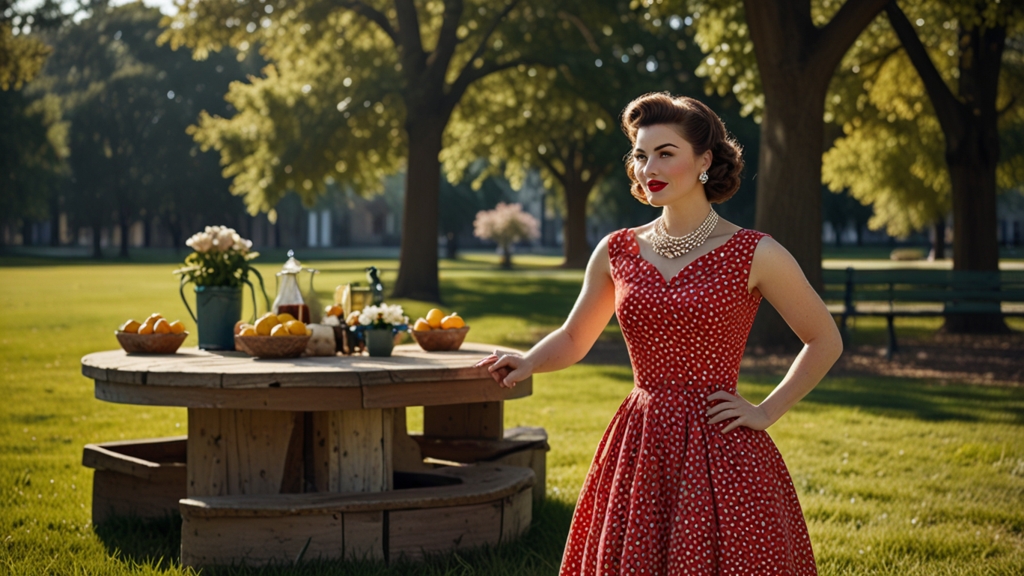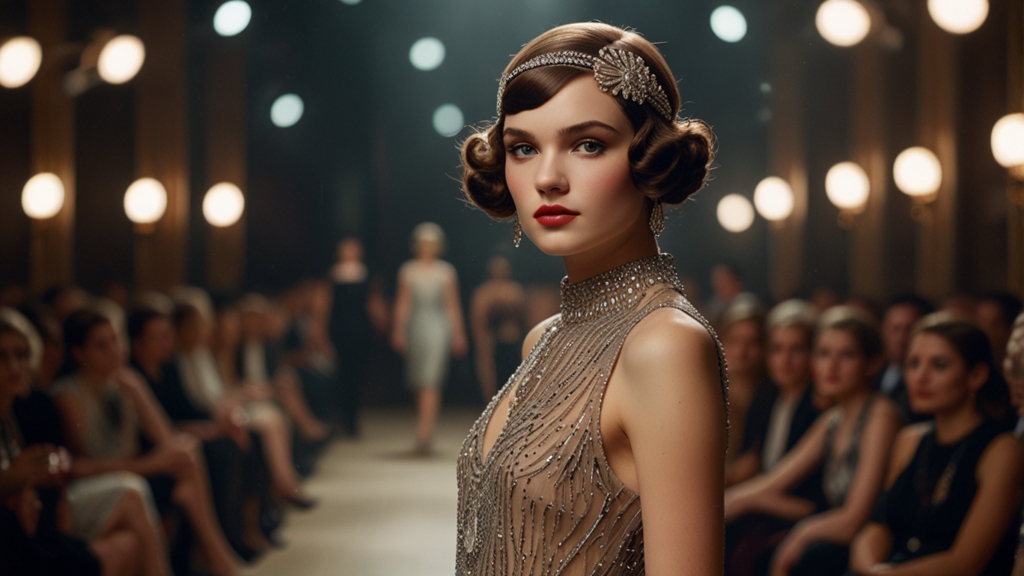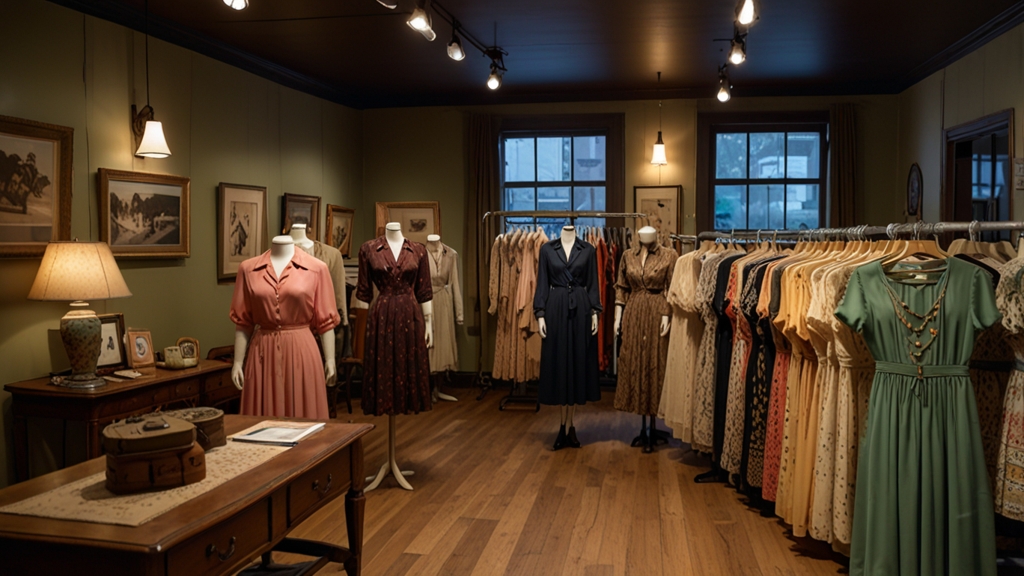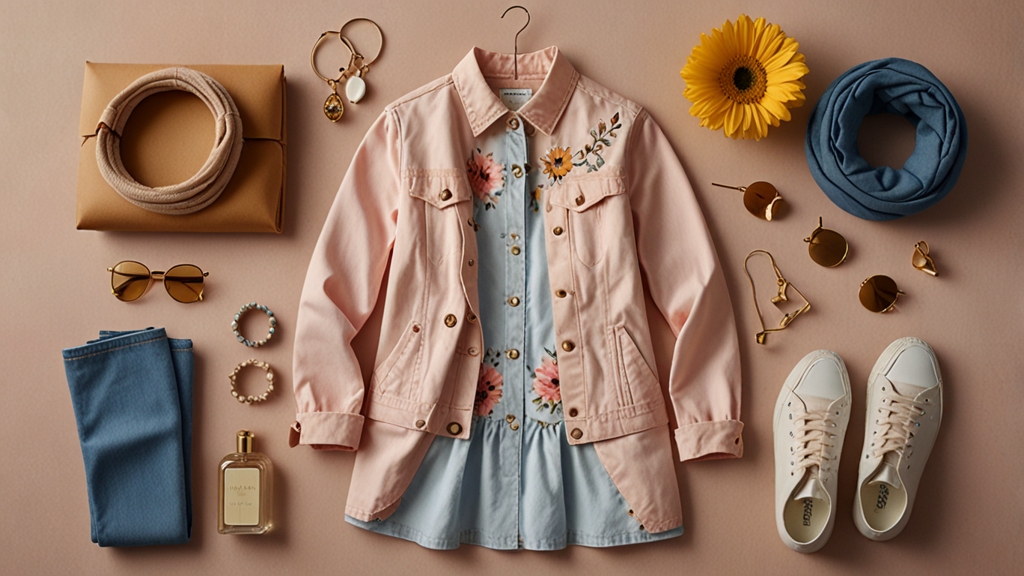Vintage fashion is more than a trend—it’s a celebration of individuality, sustainability, and timeless style. In 2025, unique vintage fashion continues to captivate, blending nostalgic charm with modern flair. Whether you’re new to vintage or a seasoned collector, this guide will inspire you to embrace vintage dresses, retro fashion, and authentic vintage clothing. Let’s explore how to build a vintage wardrobe, style it for today, and care for those cherished pieces.
Vintage Dresses: Timeless Styles for Every Occasion
Vintage dresses are the heart of unique vintage fashion, offering elegance that transcends decades. From the flirty swing dresses of the 1950s to the beaded flapper gowns of the 1920s, these pieces tell stories of bygone eras. According to fashion historians at Glamour Daze, vintage dresses remain popular in 2025 for their versatility and eco-conscious appeal—perfect for weddings, parties, or casual outings.
- 1920s Flapper Dresses: Think intricate beadwork and dropped waists, ideal for a Gatsby-inspired evening.
- 1950s Swing Dresses: Full skirts and cinched waists create a feminine silhouette, great for picnics or date nights.
- 1970s Maxi Dresses: Flowy and bohemian, these are perfect for festivals or relaxed gatherings.
Why choose vintage dresses? They’re sustainable, reducing the demand for fast fashion, and their one-of-a-kind designs ensure you stand out. Pair a 1950s dress with modern flats for a fresh look or go full vintage with cat-eye sunglasses.
Vintage Clothing: Building an Authentic Wardrobe

Vintage clothing is the foundation of a unique wardrobe, offering pieces that fast fashion can’t replicate. Whether it’s a 1940s tailored blazer or a 1960s mod skirt, vintage clothing brings character and history to your closet. The Vintage Fashion Guild emphasizes authenticity, noting that true vintage pieces are at least 20–25 years old, often featuring superior craftsmanship.
To build your vintage wardrobe:
- Start Small: Invest in versatile pieces like a vintage blouse or high-waisted trousers.
- Mix and Match: Combine vintage clothing with modern staples, like a 1940s silk scarf with a denim jacket.
- Check Quality: Look for sturdy seams, natural fabrics (e.g., cotton, wool), and unique details like hand-stitched buttons.
Authenticity matters—avoid “vintage-inspired” fast fashion that lacks the charm of true vintage. By curating vintage clothing, you’re not just styling yourself; you’re preserving fashion history.
Retro Fashion: Trends to Watch in 2025

Retro fashion is having a moment in 2025, with designers drawing inspiration from vintage aesthetics. As Glamour Daze reports, runways are showcasing bold 1980s prints, delicate 1930s bias-cut dresses, and 1970s bohemian vibes. These retro trends blend nostalgia with modern cuts, making them accessible to all.
Top retro fashion trends for 2025:
- 1920s Beaded Dresses: Sparkling gowns are back, perfect for holiday parties.
- 1970s Bohemian Layers: Think crochet vests and flowing peasant blouses, ideal for layering.
- 1980s Power Shoulders: Structured blazers with bold patterns add drama to workwear.
To embrace retro fashion, visit vintage markets or follow Adored Vintage’s Instagram for inspiration. Their curated looks show how to pair a retro blouse with tailored trousers for a chic, modern outfit. Watch for these trends at fashion weeks, where brands like Gucci and Prada are reimagining retro styles.
How to Style Vintage Clothing for Modern Looks
One of the most common questions about unique vintage fashion is: How do I style vintage clothing for modern looks? Adored Vintage answers this with practical tips, emphasizing balance and creativity. Vintage pieces can feel costumey if overdone, so blending them with contemporary items is key.
Here are five styling ideas:
- Workwear Chic: Pair a 1940s pencil skirt with a crisp white blouse and loafers.
- Casual Cool: Style a 1960s A-line dress with sneakers and a denim jacket.
- Evening Elegance: Wear a 1920s beaded gown with minimalist heels and a sleek clutch.
- Boho Vibes: Layer a 1970s peasant blouse with high-waisted jeans and ankle boots.
- Street Style: Combine a 1980s oversized blazer with bike shorts and chunky jewelry.
FAQs:
- Can I wear vintage clothing daily? Absolutely! Start with versatile pieces like vintage tees or scarves.
- How do I accessorize vintage outfits? Keep accessories simple—modern minimalist jewelry complements vintage without overwhelming it.
The trick is to let one vintage piece shine per outfit, ensuring a polished, not theatrical, look.
Vintage Fashion Trends 2025: What’s Hot This Year

What are the top vintage fashion trends for 2025? Glamour Daze predicts a surge in 1930s-inspired bias-cut dresses, known for their fluid, flattering shapes, and 1980s bold prints, like geometric patterns and florals. These trends reflect a desire for statement pieces that feel both nostalgic and fresh.
To incorporate 2025 trends:
- Bias-Cut Dresses: Wear with strappy sandals for summer events.
- Bold 1980s Prints: Try a printed scarf or skirt paired with neutral basics.
- Victorian Revival: High-neck blouses and lace details add romance to winter looks.
Check fashion weeks for inspiration—designers are showcasing vintage-inspired collections that align with these trends. Follow blogs like Adored Vintage for outfit ideas that make these trends wearable.
Where to Buy Authentic Vintage Clothing
Another common question is: Where can I find authentic vintage clothing? The Vintage Fashion Guild recommends trusted sources to avoid fakes, which are rampant in fast fashion. Here’s where to shop:
- Online Platforms:
- Etsy: Offers curated vintage from small sellers, ideal for unique finds.
- TheRealReal: Specializes in authenticated designer vintage (e.g., Chanel, Dior).
- Vestiaire Collective: Great for high-end vintage with authenticity guarantees.
- Local Shops: Visit thrift stores or vintage boutiques in cities like London or New York for one-of-a-kind pieces.
- Vintage Markets: Events like Portobello Market in London or Rose Bowl Flea Market in LA are treasure troves.
Tips for Authenticity:
- Check labels for brand history (Vintage Fashion Guild’s label database is invaluable).
- Inspect stitching—hand-stitched or metal zippers often indicate pre-1970s pieces.
- Ask for provenance, especially for designer items.
Thrift stores are budget-friendly but require patience, while curated boutiques offer quality at a premium. Choose based on your budget and time.
How to Care for Vintage Clothing

Caring for vintage clothing is crucial to preserve its beauty, as delicate fabrics like silk or lace can deteriorate without proper handling. The Vintage Fashion Guild offers expert tips to keep your pieces pristine.
Care Tips:
- Washing: Hand-wash delicate items in cold water with mild detergent. Avoid machine washing vintage silk or wool.
- Stains: Treat stains gently with vinegar or baking soda solutions—test on a hidden area first.
- Storage: Store in a cool, dry place using acid-free tissue paper and padded hangers. Avoid plastic bags, which trap moisture.
- Repairs: Use a tailor experienced with vintage fabrics for tears or loose seams.
Common Mistakes:
- Don’t use harsh chemicals or dry cleaning for fragile items.
- Avoid direct sunlight, which fades colors.
By caring for your vintage clothing, you ensure it remains wearable for years, honoring its history.
How to Identify the Era of a Vintage Garment
Collectors often ask: How can I identify the era of a vintage garment? The Vintage Fashion Guild’s resources highlight clues like labels, stitching, and design details.
Key Indicators:
- Labels: Union tags (common pre-1980s) or brand-specific fonts can pinpoint eras.
- Zippers: Metal zippers suggest pre-1970s; nylon zippers are post-1960s.
- Designs: 1920s dropped waists, 1940s utility cuts, or 1960s mod prints are era-specific.
- Fabrics: Rayon was popular in the 1940s, while polyester dominated the 1970s.
For example, a dress with a metal side zipper and a utility label likely dates to the 1940s. Use the Vintage Fashion Guild’s label database or forums for precise dating. This knowledge enhances your appreciation and helps authenticate purchases.
Conclusion: Why Unique Vintage Fashion Matters
Unique vintage fashion is a celebration of creativity, sustainability, and history. By embracing vintage dresses, retro fashion, and authentic vintage clothing, you’re making a statement—against fast fashion and for individuality. In 2025, vintage is more accessible than ever, with trends and styling tips to suit every taste.
Call-to-Action: Share your favorite vintage outfit in the comments or tag us on Instagram with #VintageVibes2025. Need more inspiration? Check our related posts on vintage accessories or sustainable fashion.
Let’s keep the vintage love alive—because fashion this good never goes out of style.
